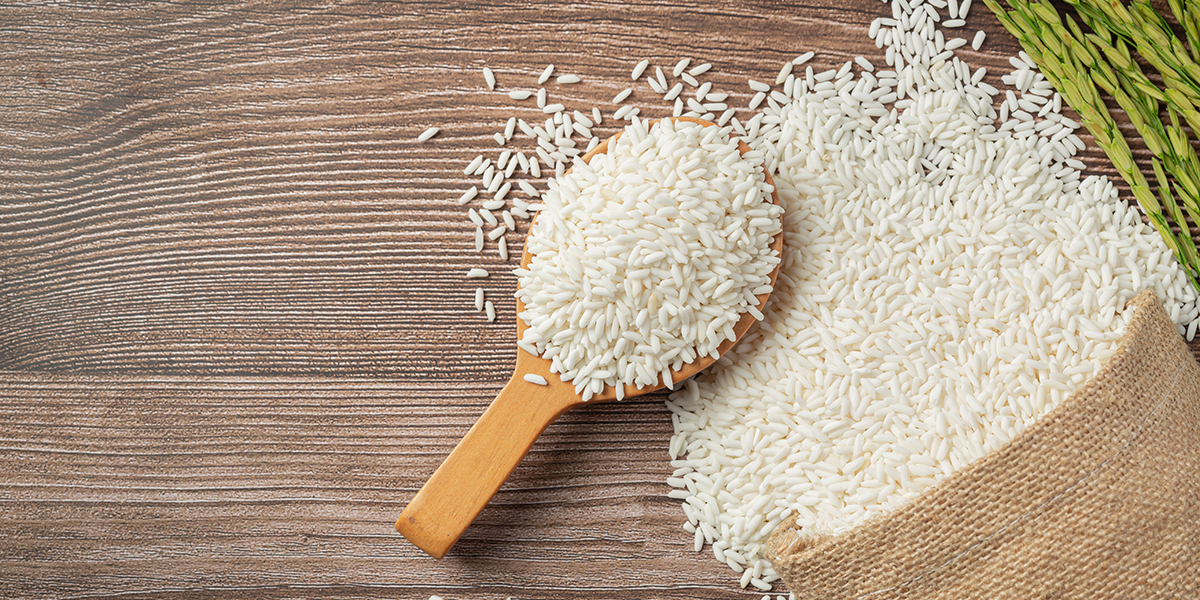
India, often called the “Land of Spices,” is also a global powerhouse in rice production and export. The nation of India functions as both an international leader in spice exports and a dominant force in the production and export of rice. India has earned recognition for its productive agricultural operations because it yields exceptional Indian rice varieties that maintain prominence throughout international marketplaces. Indian producers offer different types of Indian rice in worldwide food markets, the two main categories of rice include fragrant Basmati alongside nutrient-rich red rice to fulfill multiple international dining needs. The following blog explores the best Indian rice variety options that attract international taste buds along with their distinct characteristics while examining their status as consumer and culinary favourites.
Rice exports from India position the country as the dominant global exporter since they represent 40% of all rice shipments across the world. Thanks to the diverse range of Indian rice types produced in the country, the nation has become a leader in rice exports. As an international buying destination, India provides all types of Indian rice variety, such as long-grain, short-grain aromatic, and specialty rice.
Let’s delve into the different types of Indian rice that are popular globally and understand what makes them the best Indian rice variety in their categories:
Basmati rice stands as the most esteemed type of rice in the entire Indian rice variety. The long-grained Basmati rice provides a delicate floral aroma with a fluffy texture which guarantees its popularity in all three regions of Middle Eastern, Europe, and North America.
Also Read – What Sets Koshambh the Best Rice Exporter?
Among all rice types found in India, Non-Basmati white rice stands as a major class, which includes Sona Masoori, IR64, and other kinds. This rice remains popular because it maintains both affordability and versatility in use.
The steam-pressure treatment of parboiled rice as an Indian variety makes this nutritious product ready before commercial milling occurs. The preparation technique enables the rice to maintain natural vitamins and minerals, which produces a healthier outcome.
The health-conscious market has chosen brown rice as its preferred Indian rice variety because of escalating whole grain demand. Unlike polished white rice, brown rice retains its bran and germ layers.
Red rice functions as an Indian rice specialty due to its unique reddish hue along with its distinctive earthy taste notes. The agricultural regions of Kerala and Himachal Pradesh cultivate this rice species, which offers numerous health-enhancing nutrients.
Indian farmers are producing Jasmine-style rice in their farms, this traditional Thai rice is now known as Indian fragrant rice.
Various elements influence how Indian rice varieties maintain their leading position in global markets:
Due to diverse agro-climatic zones in India, people produce different types of rice including Himalayan Basmati and coastal Sona Masoori.
Efficient farming practices and large-scale production executed in India keep the cost of rice competitive on the market.
Indian rice adheres to international standards like ISO, FSSAI, and FDA.
Rice exports receive continuous support from the government through policies that include the Agricultural Export Policy as well as subsidies.
The worldwide organic food industry boost produced higher demand for both organic brown and red rice types from India.
The Western market shows increasing demand for branded and packaged premium Basmati as well as parboiled rice.
The Indian farmer community embraces green agricultural methods because Western markets seek sustainable Indian rice varieties.
Also Read – How to Choose Best Indian Rice Exporter?
The Indian rice export sector continues to flourish, but it faces ongoing hurdles such as climate change issues and trade barriers combined with Vietnamese and Thai market competition. However, opportunities abound:
The development of fortified rice products with enriched iron content represents a potential innovation suitable for malnutrition intervention programs.
The expansion opportunity exists in Eastern Europe to reach regions that remain unexplored by the market.
The integration of digital platforms powered by AI technology enables farmers to link with international purchasers through connected networks.
Koshambh distinguishes itself as a top exporter of the best Indian rice variety options to global markets. Our three-fold dedication to quality, combined with sustainability, together with superior customer satisfaction, distinguishes Koshambh.
The different types of Indian rice that Koshambh offers can serve the requirements of every business segment, including wholesalers, retailers, and chefs.
Indian rice varieties experience worldwide popularity because of factors that surpass mere chance. India upholds an unmatched collection of rice diversity which encompasses flavorful Basmati growers in Punjab and nourishing red rice cultivations in Kerala. The best Indian rice variety, which excels as food ingredients for both gourmet cuisine and health diets and day-to-day consumption consistently gains worldwide popularity.
The rising global market demand for Indian rice types prompts Koshambh to deliver Indian agricultural resources to international kitchens. Experience the global appeal of Indian rice by choosing from our premium collection of different types of Indian rice at Koshambh.
